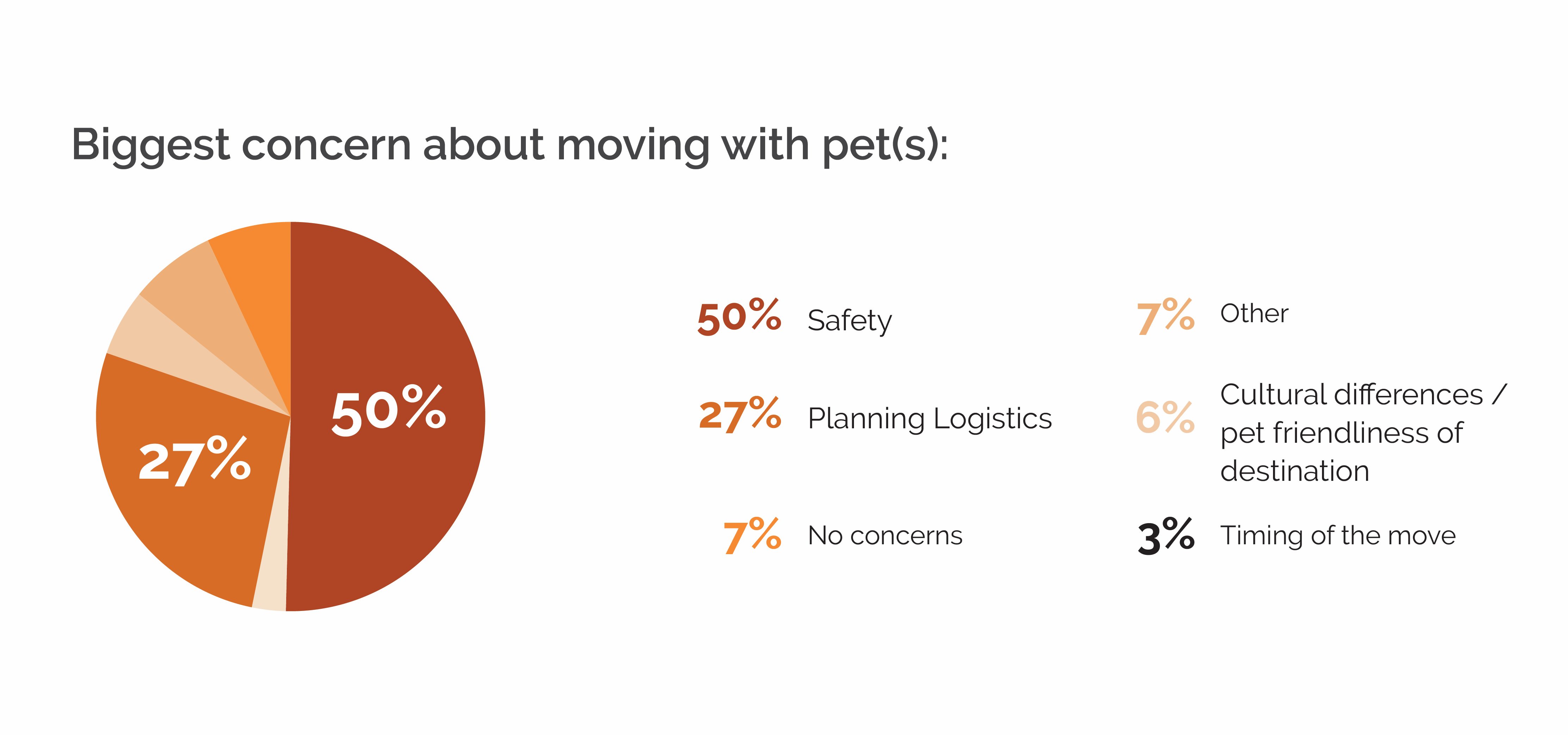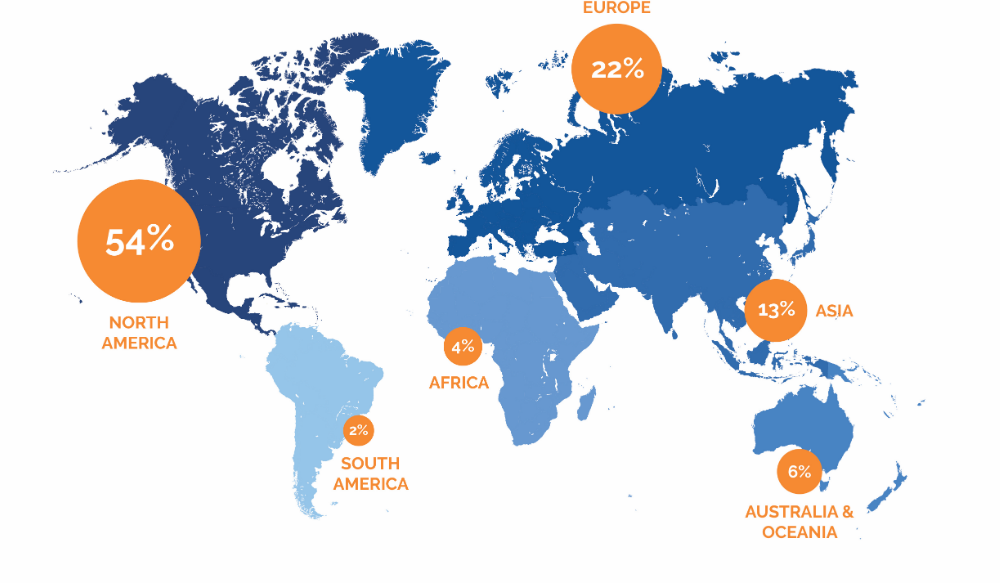Pets and People on the Move
Marketing specialist Christina Quezada breaks down the results from our 2019 pet travel survey for Mobility Magazine.
We recently surveyed pet owners around the world to gauge how pet households are living and how they view relocating with their pets in 2019. PetRelocation's Marketing Specialist, Christina Quezada, recently shared some tips & statistics about the pet travel world in Worldwide ERC's November edition of Mobility Magazine. Below are our findings from more than 1,900 respondents, along with some additional insights and travel tips!
Pets and People on the Move
An Overview of Today's Pets Households
With more than 70% of pet households reporting at least one dog in the home, the canine is by far the most common pet, followed by  42% of households having at least one cat. Birds represent a significant percentage of pet households, too, as they are present in nearly 4% of homes globally. Of these more common pets, PetRelocation’s survey showed many pet owners reporting travel frustrations within certain categories.
42% of households having at least one cat. Birds represent a significant percentage of pet households, too, as they are present in nearly 4% of homes globally. Of these more common pets, PetRelocation’s survey showed many pet owners reporting travel frustrations within certain categories.
For example, large dogs and snub-nosed breeds (such as pugs, English bulldogs, and Persian cats) have become increasingly difficult, both financially and logistically, to relocate within the U.S. Exotic pets, including many bird species, remain complex and expensive to import and export. This is due to the enforced protection of certain exotic species, which includes many common pets such as birds, reptiles, and even some cats. A process that requires a significant amount of research and paperwork is necessary to prove the pet was not taken from the wild.
Pet owners of some less commonly moved species such as hamsters and rabbits also reported concerns and difficulties in planning for and transporting these animals. A growing number of pet owners now face more limited options, with much more expensive ground transportation being the only choice for some. In addition to cost, the lead times and travel times for moving a pet by ground are typically much longer. This is reshaping the nature of pet moves within the U.S. now and for the future. These factors can be unexpected and challenging for those relocating temporarily and learning of shifts in airline regulations since the last time they moved with the same pets.
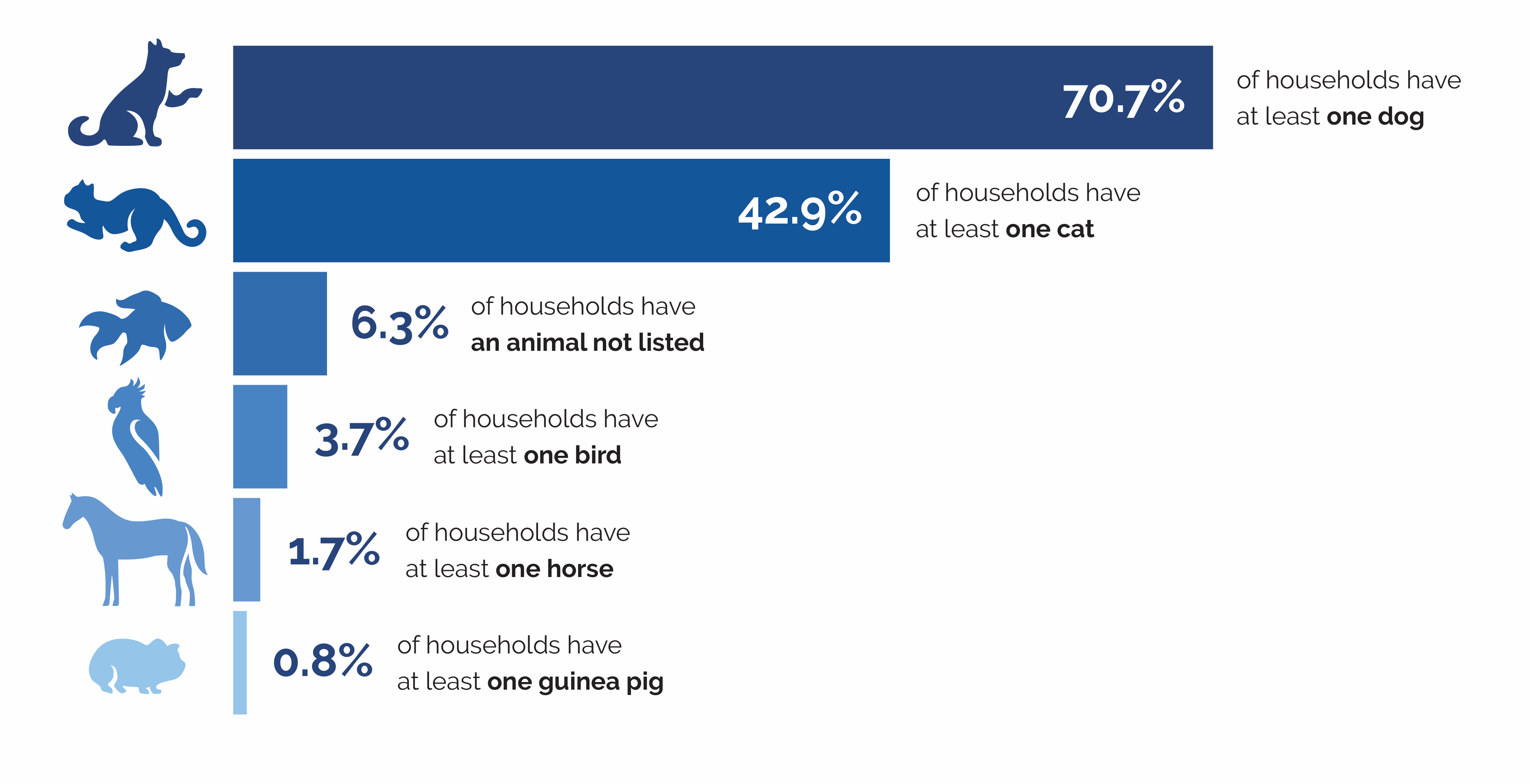
The majority of pet households report spending up to US$2,000 annually on their furry or feathered family members, with 13% of respondents estimating expenses of more than $3,500. With the cost of many pet moves exceeding this amount, it’s not surprising that many respondents mentioned cost as either a barrier or an aspect of pet travel in which they would like to see improvement. Depending on the destination, costs related to requirements such as quarantine and manifest cargo are unavoidable.
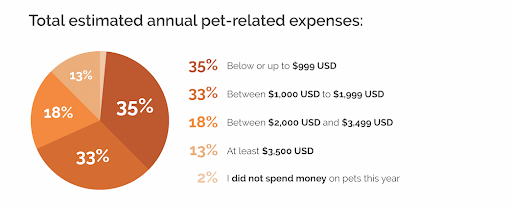
More than half of survey respondents said they either always or sometimes take their pets on vacation, and more than 90% reported they have completed or are planning to complete a move with a pet. Nearly 65% of survey respondents have already moved a pet via airplane. With so many pets on the move domestically and internationally, continuing efforts to improve all aspects of pet travel remain an important reality. According to the U.S. Department of Transportation, more than 99% of healthy pets can and do travel safely, but that still leaves room for improvement. In an effort to see this reality take shape, airlines have started assuming more involvement in the checking of documents and other criteria owners must meet in order to successfully relocate their pets.
Additionally, it is becoming more likely that travel arrangements will have to be made by International Pet and Animal Transportation Association (IPATA) members and by those well-versed in requirements and safety protocol for various species and breeds. This transition toward more entities requiring professional pet movers will hopefully reduce the number of preventable incidents that result in pet injury or death, creating a safer experience for all involved. Safety remains a top priority for pet owners who are planning or considering travel for their pets, with logistics being the top concern for more than a quarter of respondents. Other frequently reported barriers to pet travel include pet anxiety, age, and breed-specific obstacles. Equipping pet owners with the knowledge to set their move up for success can help address many of these concerns and ensure a positive post-travel experience for pets and their people.
Best Practices and tips for Moving pets
Moving a pet safely across the country or internationally requires a considerable amount of preparation, particularly if the destination is a rabies-free nation such as Australia or the U.K. Based on the experience of thousands of moves, the following tips should help ensure a successful relocation.
Do your research
Not every destination country requires the same paperwork, bloodwork, and timelines. In fact, these regulations can vary tremendously. Be sure to do all of the preliminary homework well in advance to ensure your move date and your pet’s travel preparedness match up. For instance, importing a pet to Australia takes six months on average, due to a required antibody test and waiting period. Some nations also enforce breed and species bans or quarantine requirements, depending on the type of pet.
Prioritize crate acclimation
It’s not something you necessarily learn until you’re facing a long-distance pet relocation. Crate training is one of the most important parts of planning a safe pet move. Having a pet that is comfortable in the travel crate helps ease the anxiety that this major life event can bring about.
Taking a few training steps before the day of departure can alleviate much of the potential stress surrounding cargo pet travel. To help pets acclimate to the travel crate before a relocation:
- Feed them in their crate. Start with the door open, and as you progress, start closing it all the way. As soon as they are done eating, let them back out. A positive action, while they are in the crate with the door closed, means positive conditioning. Keeping the time span short also reduces anxiety and shows your pet that being inside their crate is no big deal.
- Cover crates with something light and breathable with the door closed for short time increments so the pet cannot see what is going on around them. Having a crate covered will help them feel more secure. Think of it as their personal den space. A covered crate will also simulate the low lighting of traveling on a plane
- Ease pets into the crate for longer periods of time incrementally, first when you are home before you start leaving them in a crate when you are gone. This allows you to have some separation from your dog or cat, but it also allows them to see and hear you while you are home. Doing this in small spurts reinforces that it’s not a big deal to be inside their crate. Once they are doing well in their crate, start leaving the house for quick errands.
- If possible, have them sleep in the crate at night. It doesn’t have to be every night, but it’s a great start, as they are naturally more relaxed during the night - time. Start with the crate in your room, and gradually move it closer to the door until they are in a different room. Leveraging their circadian rhythm will help condition them to sleep in their crate
Facilitate a healthy transition
After a long journey in unfamiliar surroundings, it can take a little while for pets to adjust to a new home. We recommend taking the following measures to ensure their transition goes as smoothly as possible.
WATER
Upon arrival, your pet may be panting more than normal and seem more thirsty than usual. This is because stress can cause many pets to refuse water during travel. In order to slowly rehydrate them, give water in small amounts. Ice cubes are also a great way to do this.
FOOD
In addition to being thirsty as described above, your pet may also be very hungry after not eating for a significant period of time. To avoid an upset stomach or bloat—which requires immediate medical attention— slowly introduce small amounts of food. Dog owners should wait one hour after feeding before starting exercise. Large-breed dog owners, beware: Your dog is even more susceptible to bloat.
HYGIENE
Sometimes pets will not want to relieve themselves in unfamiliar places or when they are with people they don’t know. Once they are reunited with you, make sure to give them the opportunity to do so. Also, they may have accidents in your new home until they become fully acclimated. For example, if you have moved to a city with a dog, you may need to build in some training and acclimation time to use concrete and not just grass. Lastly, your pet may have soiled his or her crate during travel, so be prepared to give your pet a bath upon arrival to get freshened up.
ROUTINE
Pets love routine. Setting up a new normal routine, such as walking and feeding times, can help your pet feel comfortable and secure in your new home. With some patience and consistency, your pet will feel safe and protected in no time.
CARE AND ATTENTION
Your pet may be more needy than usual upon arrival. Being away from you can be tough for a pet, so make sure you make time for some personal one-on-one attention. Some playtime, petting, or brushing is a great way to show your pet you missed them, too!
A few more tips
Below are some additional tips that can make pet travel a positive experience for both the pet owner and the pet.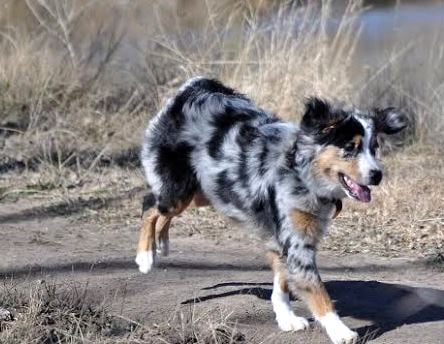
- Stay flexible. If possible, try to travel when heat or cold embargoes won’t be an issue.
- Avoid holiday and weekend moves, because:
- Airports will not be fully staffed and are generally more congested
- Hired services won’t be as readily available
- Double-check requirements surrounding check-in and layover duration(s)
- Most international layovers require much more time than domestic ones.
- Check-in times increase for international travel as well.
- Take extra steps to reduce pet anxiety and ensure the comfort of snub-nosed breeds.
- Providing exercise prior to travel can help anxious pets relax.
- Some breeds, such as pugs, benefit from additional air circulation, which may require buying a crate one size bigger
- Pets embarking on a long journey overseas may have an accident (it’s OK, it happens!). It’s never a bad idea to arrange a bath or grooming appointment to help keep them clean after an international flight.
peace of mind
In our growing global economy, the complicated logistics of relocation are increasingly a challenge for families with pets. Advance planning and a full understanding of all the travel requirements for your particular pets and destinations go a long way toward ensuring the safest possible travel protocols and practices for pets around the globe, and they help ease the stress and boost peace of mind from pickup to happy reunion

So much great information! Thank you to Christina for sharing these current trends in pet travel along with tips for a successful transition. Click here to read the whole Mobility Magazine November 2019 issue.

